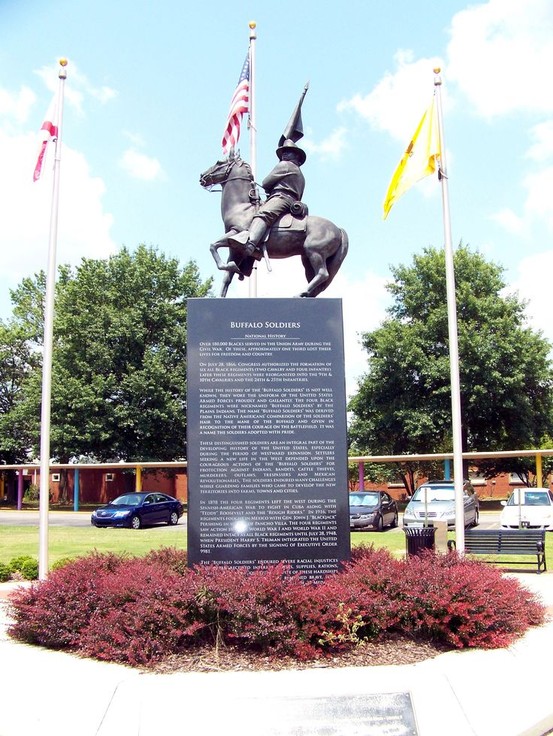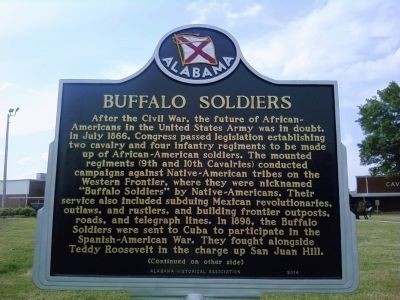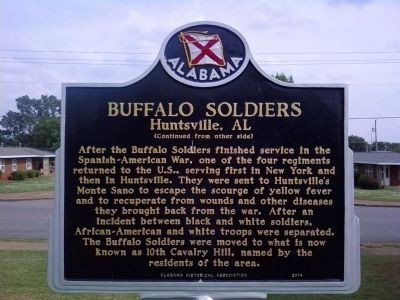10th Cavalry "Buffalo Soldiers" Memorial
Introduction
Text-to-speech Audio
Images
The 10th Cavalry "Buffalo Soldiers" Memorial in Huntsville, Alabama.

Front of the historical marker.

Back of the historical marker.

Backstory and Context
Text-to-speech Audio
The city of Huntsville paid artist Casey Downing $46,000 to create the statue. The idea to put a memorial in Huntsville is credited to Civil Rights activist, Dr. John Cashin.
Following their service in the Spanish-American War, the Buffalo Soldiers of the 10th Cavalry were encamped at Cavalry Hills in Huntsville and commanded by Army legend “Black Jack” Pershing.
The historical marker at the site has the following inscription:
“After the Civil War, the future of African-Americans in the United States Army was in doubt. In July 1866, Congress passed legislation establishing two cavalry and four infantry regiments to be made up of African-American soldiers. The mounted regiments (9th and 10th Cavalries) conducted campaigns against Native-American tribes on the Western Frontier, where they were nicknamed “Buffalo Soldiers” by Native-Americans. Their service also included subduing Mexican revolutionaries, outlaws, and rustlers, and building frontier outposts, roads and telegraph lines. In 1898, the Buffalo Soldiers were sent to Cuba to participate in the Spanish-American War. They fought alongside Teddy Roosevelt in the charge up San Juan Hill.
After the Buffalo Soldiers finished service in the Spanish-American War, one of the four regiments returned to the U.S., serving first in New York and then in Huntsville. They were sent to Huntsville's Monte Sano to escape the scourge of yellow fever and to recuperate from wounds and other diseases they brought back from the war. After an incident between Black and white soldiers, African-American and white troops were separated. The Buffalo Soldiers were moved to what is now known as 10th Cavalry Hill, named by the residents of the area.”
